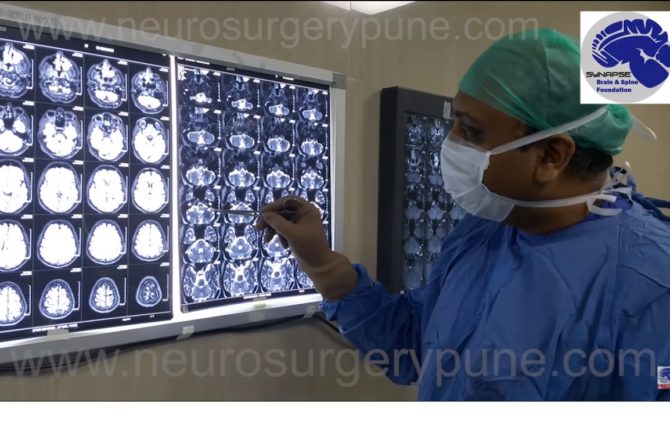
Hemifacial surgery
This surgical video of the MVD surgery is done using one of the world’s finest neuro-microscopes, which is why the nerve and vessel are seen so magnified and in such fantastic resolution and detail. This is very crucial for the success of this operation. It’s not about the magnification alone, the Xenon light source used in the microscope lights up all intricate details of the brain anatomy. You can see in this MVD video that the facial Nerve is compressed by the blood vessel from behind, and the pulsations of the artery cause the hemifacial spasm in this case. One has to be very careful while handling the vessel because they supply extremely important parts of the brain. A Teflon sponge is inserted between the nerve and vessel. The sponge is made of an inert material (does not react with surrounding tissues), and remains there, cushioning the nerve and protecting it from the pulsations of the blood vessel. This is the crux of the operation…operating through a key-hole and decompressing the facial nerve using an inert Teflon sponge.
The sponge does not move by itself after insertion, even with change in position. It remains where it was inserted. There are just 4 or 5 sutures or staples on the skin. The incision is inside the hairline of the patient, so the scar of an MVD surgery is generally not visible after the operation.
Though the hemifacial spasms generally disappear immediately after the operation, occasionally it takes longer, up to a month and a half after surgery. This is mentioned in international statistics and their results. Generally speaking, the results are better with early surgery. But the patient may not be receptive to the idea of surgery when the disease is in its early stage. There is a statistically higher incidence of success, if patients are operated on when they initially begin suffering from this disease.
The patient can get back to his/ her normal life usually about ten to fifteen days after surgery.
Any operation, whether on the leg or hand or abdomen… or brain and spine, comes with some inherent unavoidable risks. It is necessary to weigh the risks of surgery against those of the disease itself. More importantly, the patient must ask himself/herself the following questions: How experienced is the surgeon in this type of surgery? Is the hospital capable of catering to all aspects of care both during and after operation?
Leave a reply
Leave a reply